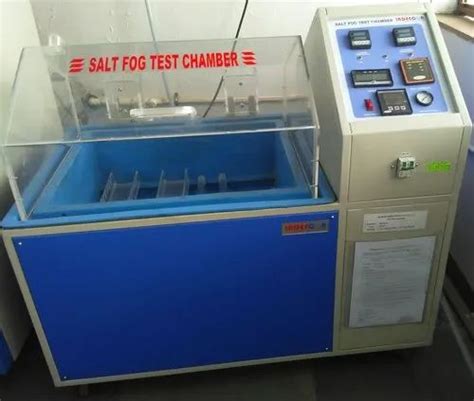What is Electronics Environmental Testing?
Electronics environmental testing involves subjecting electronic devices, components, and systems to various environmental conditions to assess their performance, reliability, and durability. The purpose of these tests is to ensure that the electronics can withstand the expected environmental stresses they may encounter during their operational lifetime.
Environmental testing is crucial for electronics because it helps identify potential failures, weaknesses, or degradation in the design, materials, or manufacturing process. By exposing the electronics to simulated environmental conditions, manufacturers can make necessary improvements and ensure that their products meet the required standards and specifications.
Categories of Electronics Environmental Testing
Electronics environmental testing can be broadly categorized into two main types:
-
Climatic Testing: This category includes tests that simulate various environmental conditions related to temperature, humidity, pressure, and other climatic factors.
-
Dynamic Testing: This category includes tests that simulate mechanical stresses and vibrations that electronics may experience during transportation, handling, or operation.
Different Types of Electronics Environmental Tests
There are numerous types of environmental tests that electronics may undergo, depending on their intended application and the specific environmental conditions they are expected to encounter. Some of the most common types of tests include:
Temperature Testing
Temperature testing involves exposing electronics to extreme temperatures to assess their performance and reliability. The two main types of temperature tests are:
-
High-Temperature Testing: This test evaluates the electronics’ ability to function at elevated temperatures, typically above their normal operating range. The test may involve subjecting the electronics to a constant high temperature or cycling between high and low temperatures.
-
Low-Temperature Testing: This test assesses the electronics’ performance at extremely low temperatures, often below their specified operating range. The test may involve exposing the electronics to a constant low temperature or cycling between low and high temperatures.
Humidity Testing
Humidity testing evaluates the electronics’ resistance to moisture and its effects on performance and reliability. There are two main types of humidity tests:
-
Steady-State Humidity Testing: This test involves exposing the electronics to a constant level of high humidity for an extended period to assess their ability to withstand moisture.
-
Cyclic Humidity Testing: This test subjects the electronics to alternating cycles of high and low humidity to simulate real-world conditions and evaluate their performance under varying moisture levels.
Vibration Testing
Vibration testing assesses the electronics’ ability to withstand mechanical vibrations during transportation, handling, or operation. There are several types of vibration tests, including:
-
Sine Vibration Testing: This test involves subjecting the electronics to sinusoidal vibrations at specific frequencies and amplitudes to simulate transportation or operational conditions.
-
Random Vibration Testing: This test exposes the electronics to random vibrations across a wide range of frequencies to simulate real-world environments.
-
Shock Testing: This test evaluates the electronics’ ability to withstand sudden, high-intensity mechanical shocks, such as those experienced during drops or impacts.
Altitude Testing
Altitude testing assesses the electronics’ performance and reliability at high altitudes or in low-pressure environments. This test is particularly relevant for electronics used in aerospace, aviation, or high-altitude applications.
Salt Spray Testing
Salt spray testing evaluates the electronics’ resistance to corrosion caused by exposure to salt water or salt-laden atmospheres. This test is essential for electronics used in marine or coastal environments.
Dust and Sand Testing
Dust and sand testing assesses the electronics’ ability to withstand exposure to dust, sand, or other particulate matter that may cause abrasion, clogging, or other performance issues.

Frequently Asked Questions (FAQ)
-
Q: Why is environmental testing important for electronics?
A: Environmental testing is crucial for electronics because it helps identify potential failures, weaknesses, or degradation in the design, materials, or manufacturing process. By exposing the electronics to simulated environmental conditions, manufacturers can make necessary improvements and ensure that their products meet the required standards and specifications. -
Q: What are the main categories of electronics environmental testing?
A: The two main categories of electronics environmental testing are climatic testing, which includes tests related to temperature, humidity, and pressure, and dynamic testing, which includes tests that simulate mechanical stresses and vibrations. -
Q: What is the purpose of temperature testing for electronics?
A: Temperature testing evaluates the electronics’ ability to function and maintain reliability at extreme temperatures, both high and low. This test helps ensure that the electronics can withstand the expected temperature ranges they may encounter during their operational lifetime. -
Q: What is the difference between sine vibration testing and random vibration testing?
A: Sine vibration testing subjects the electronics to sinusoidal vibrations at specific frequencies and amplitudes to simulate transportation or operational conditions. In contrast, random vibration testing exposes the electronics to random vibrations across a wide range of frequencies to simulate real-world environments. -
Q: Why is salt spray testing important for electronics?
A: Salt spray testing is essential for electronics used in marine or coastal environments because it evaluates their resistance to corrosion caused by exposure to salt water or salt-laden atmospheres. This test helps ensure that the electronics can withstand the corrosive effects of salt and maintain their performance and reliability in these harsh environments.
Conclusion
Electronics environmental testing is a critical process that ensures the performance, reliability, and durability of electronic devices, components, and systems under various environmental conditions. By subjecting electronics to a wide range of tests, including temperature, humidity, vibration, altitude, salt spray, and dust and sand testing, manufacturers can identify potential issues and make necessary improvements to their products.
Proper environmental testing helps reduce the risk of failures, increases customer satisfaction, and ensures that electronics meet the required standards and specifications for their intended applications. As technology continues to advance and electronics become more complex, the importance of comprehensive environmental testing will only continue to grow.

No responses yet